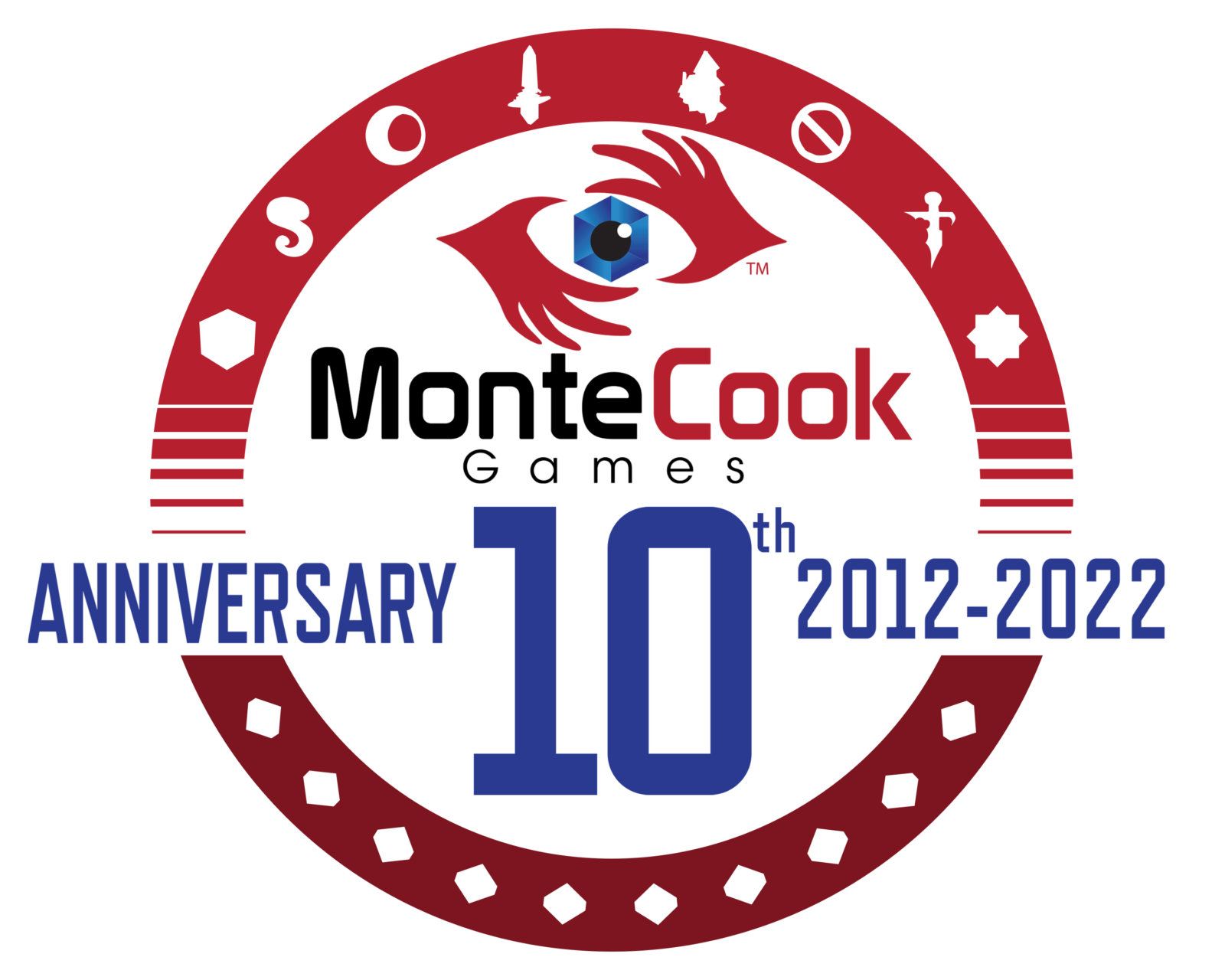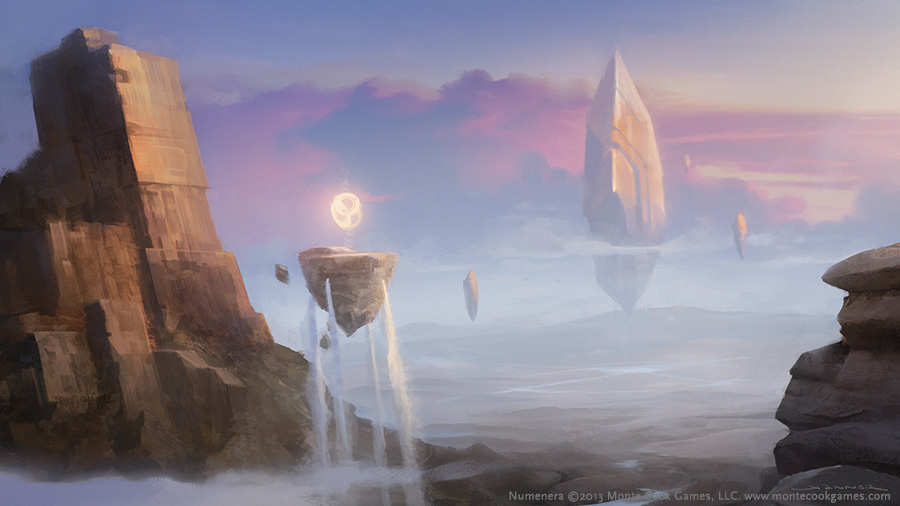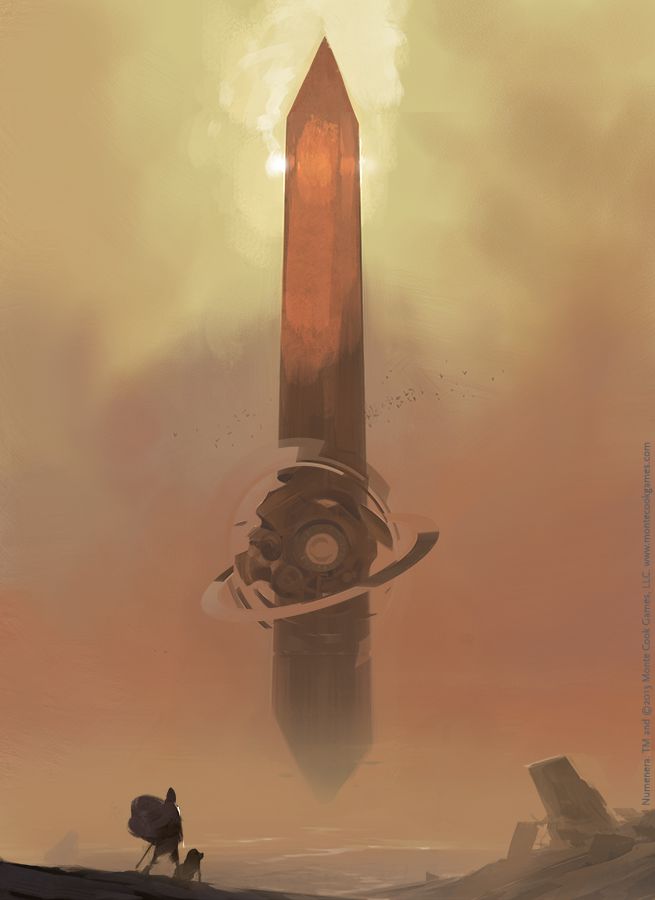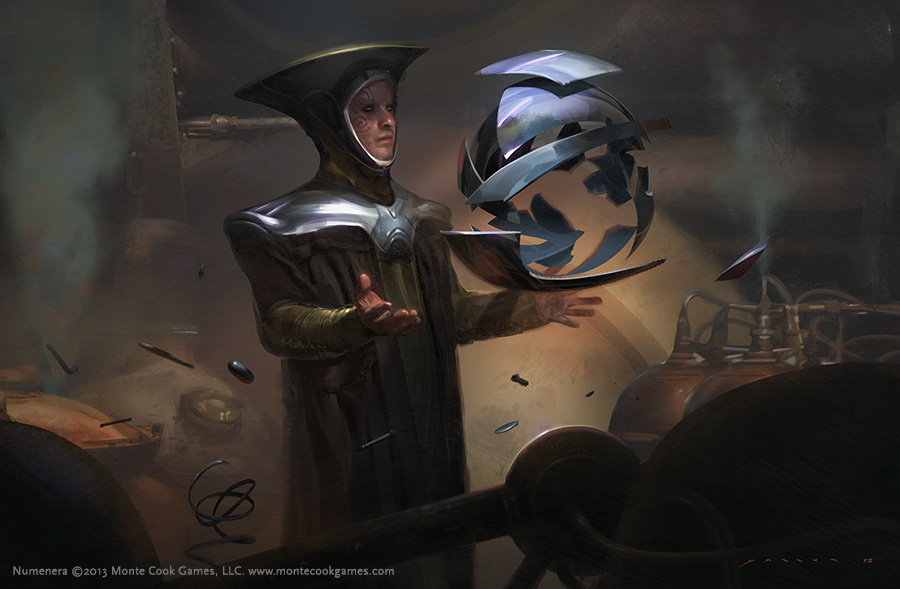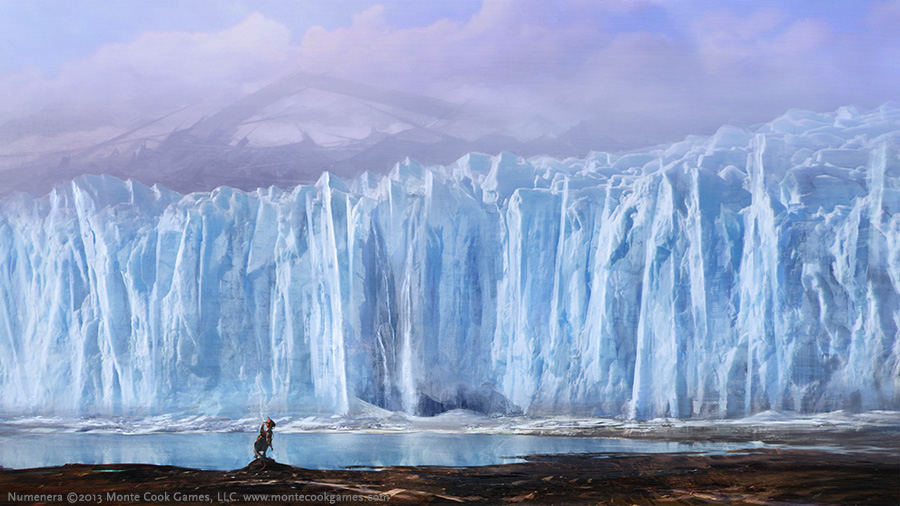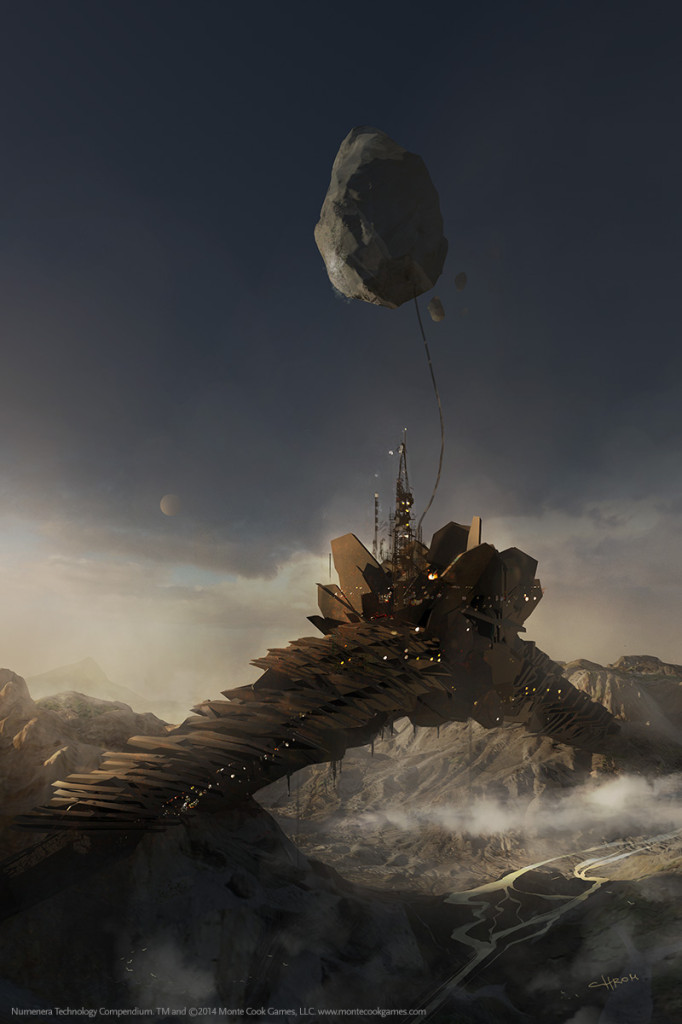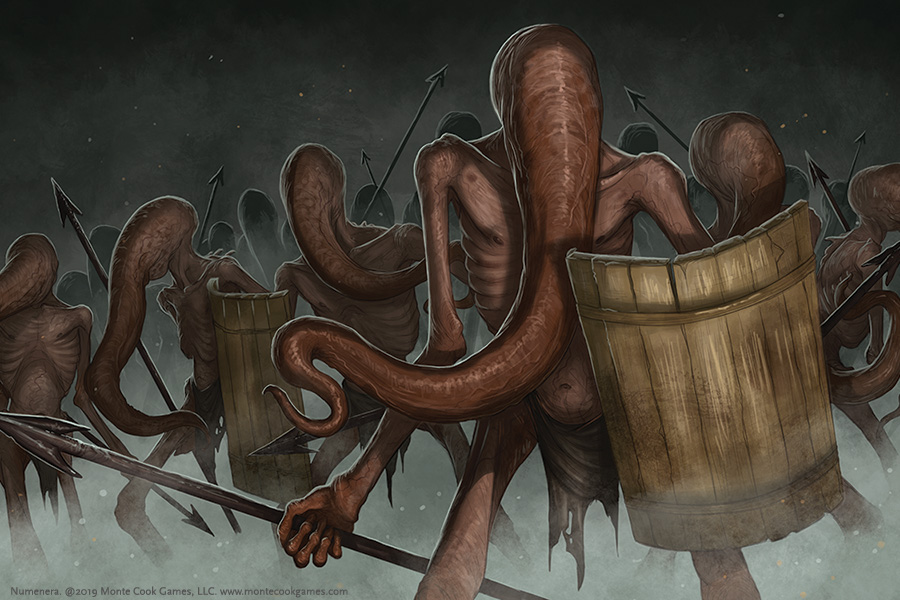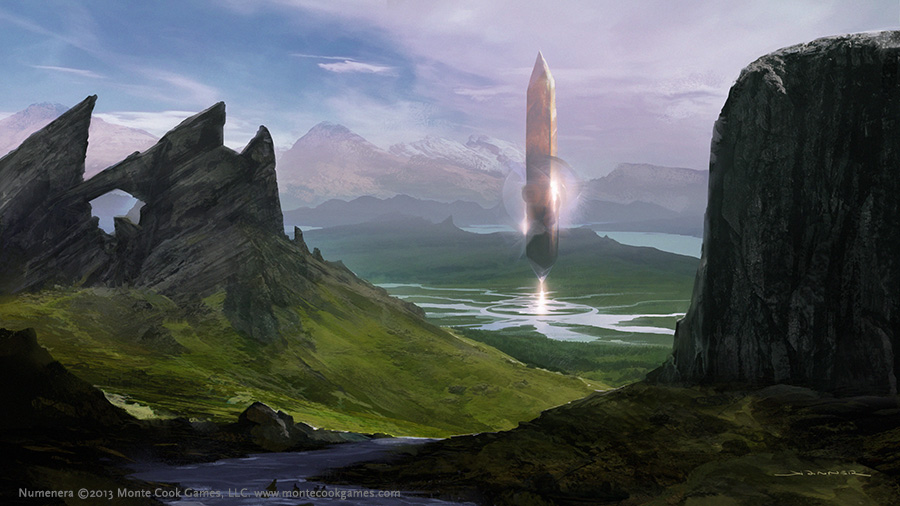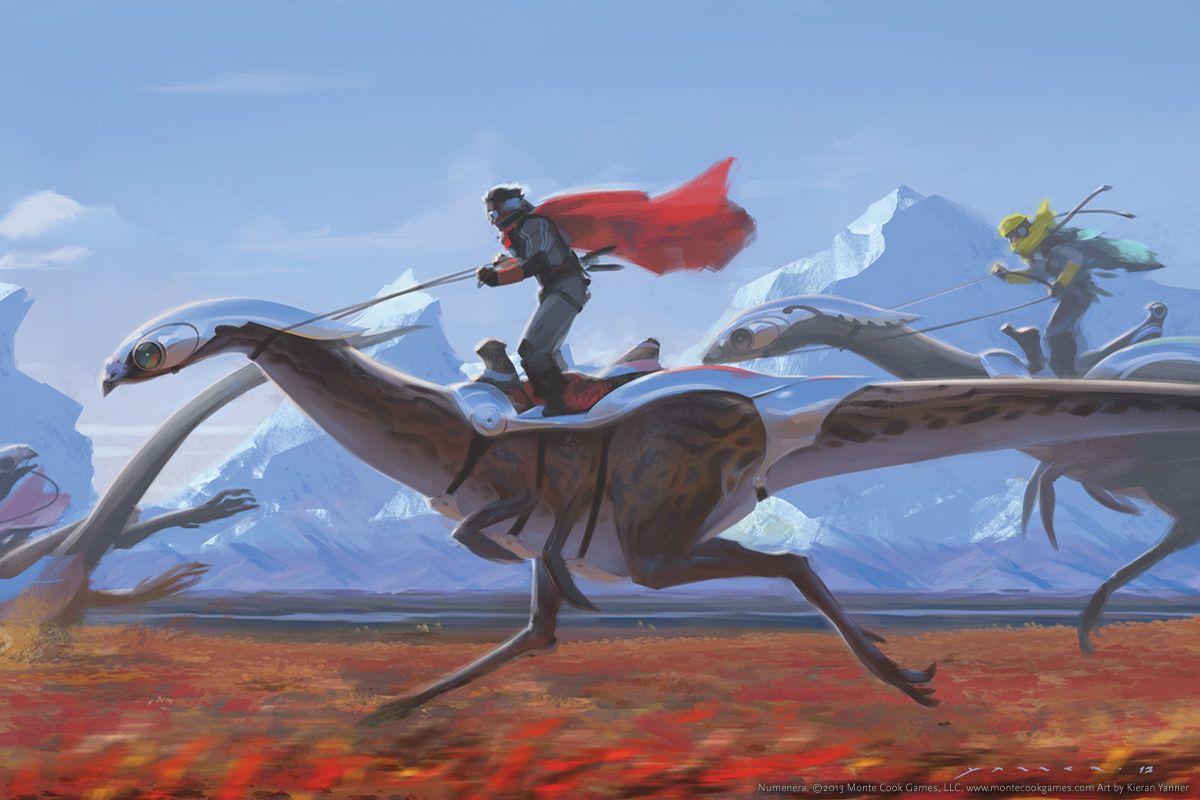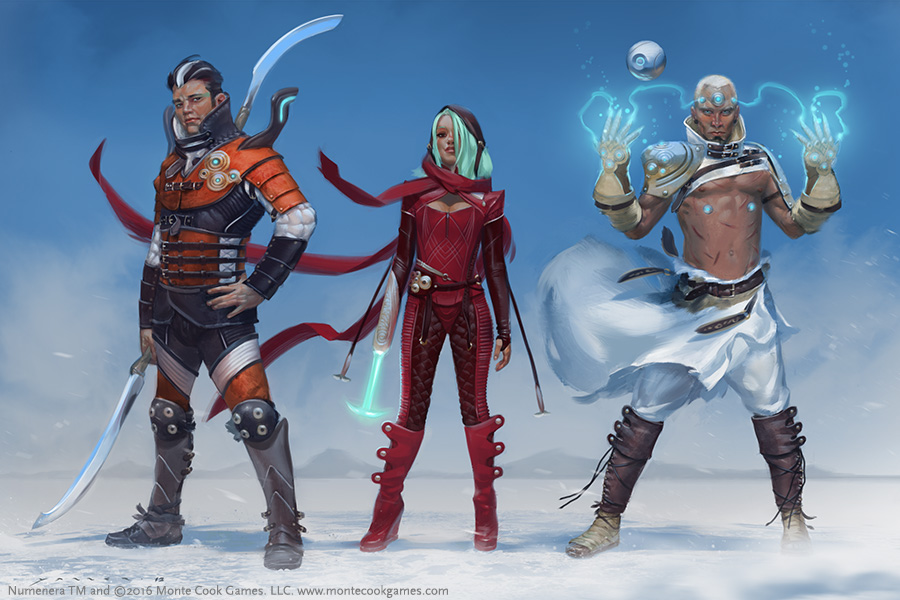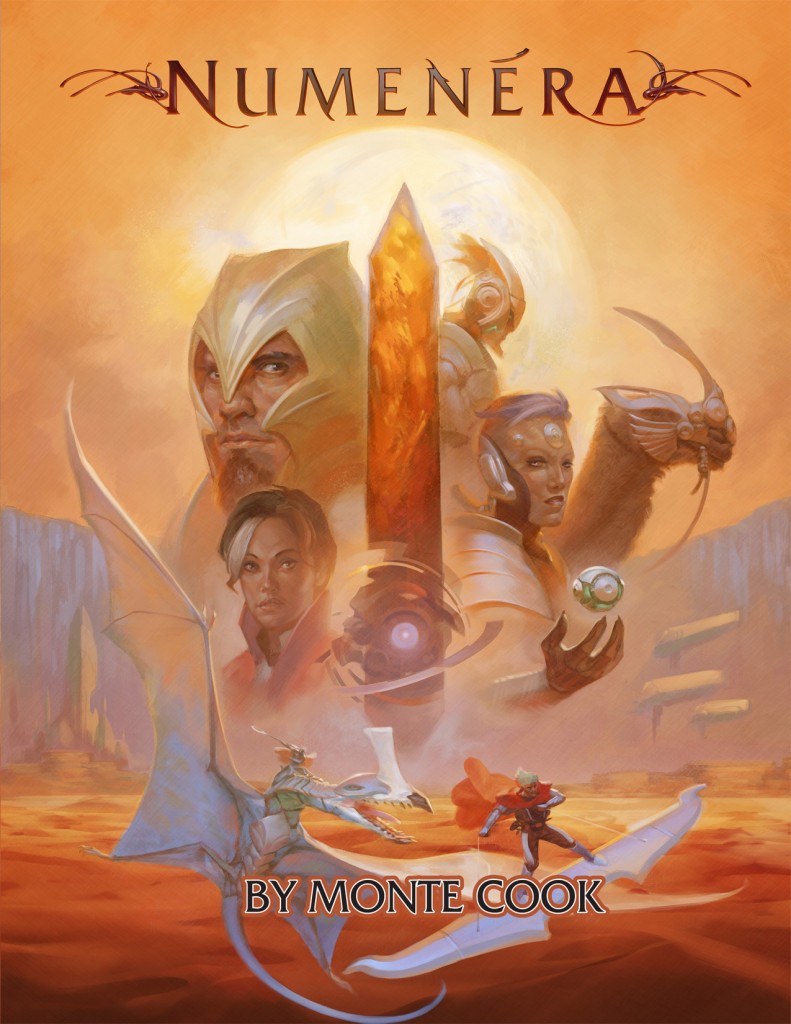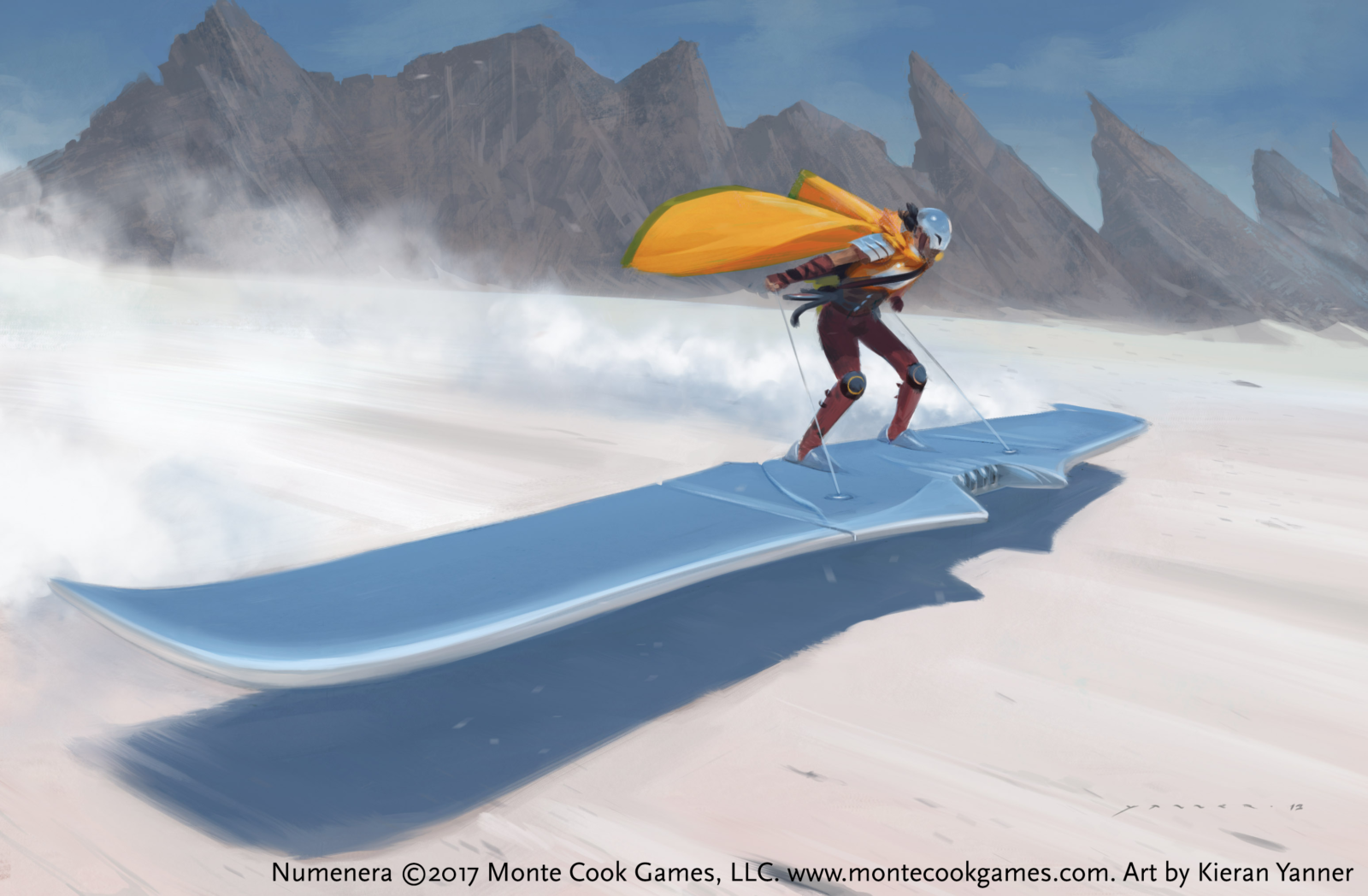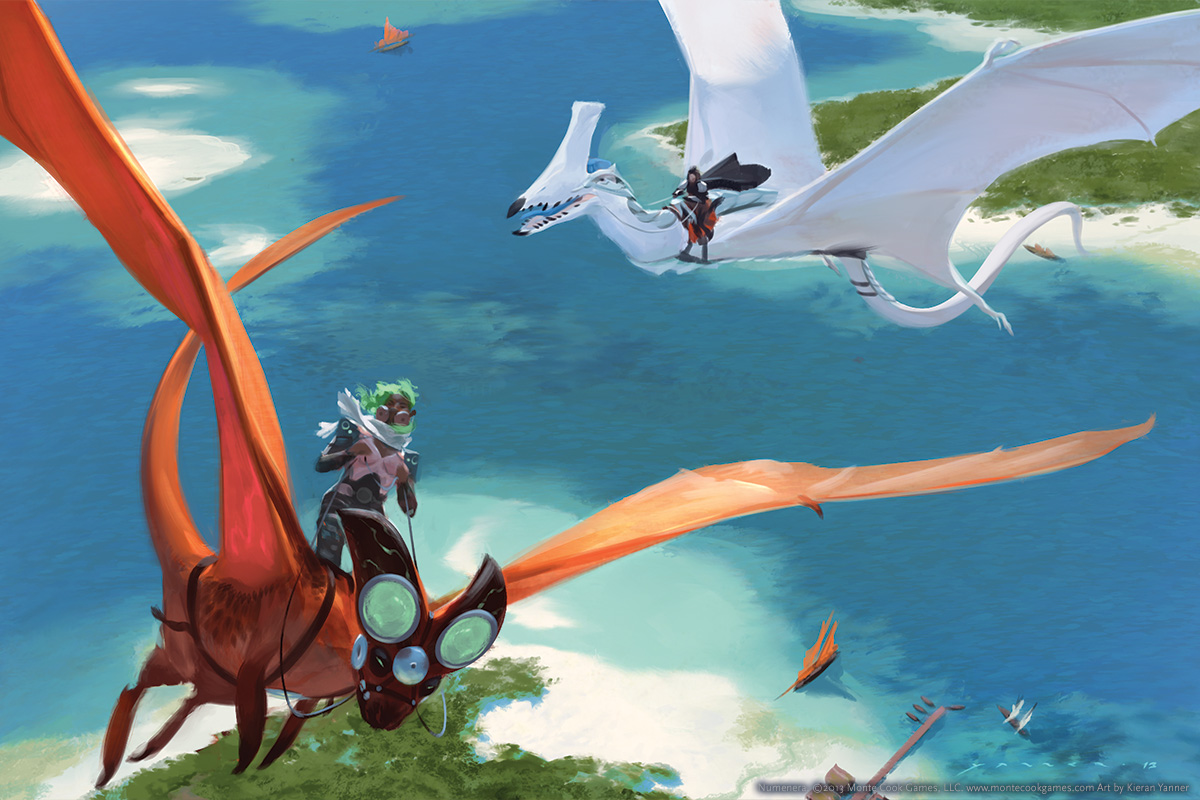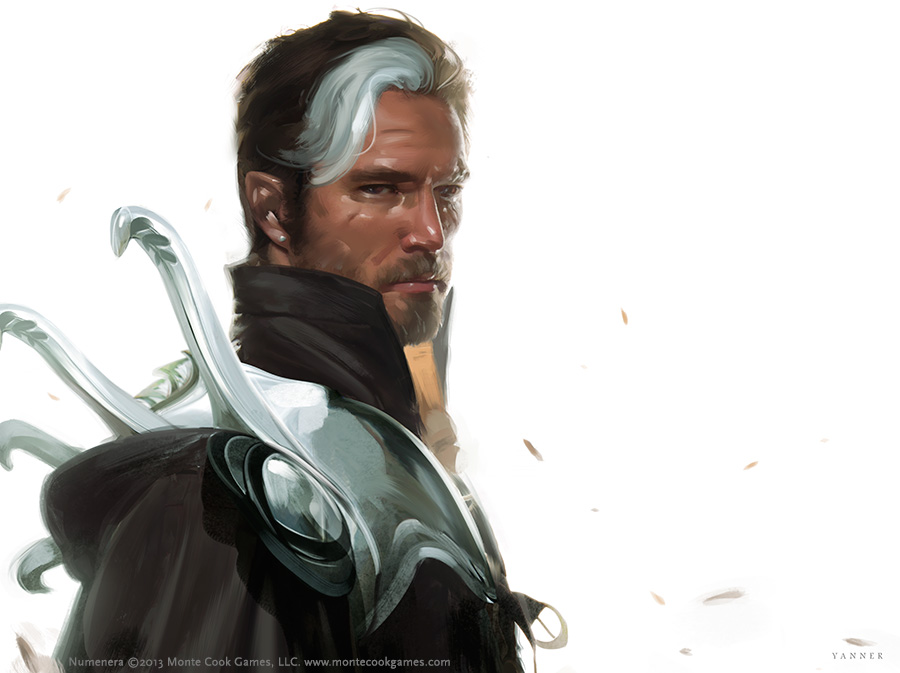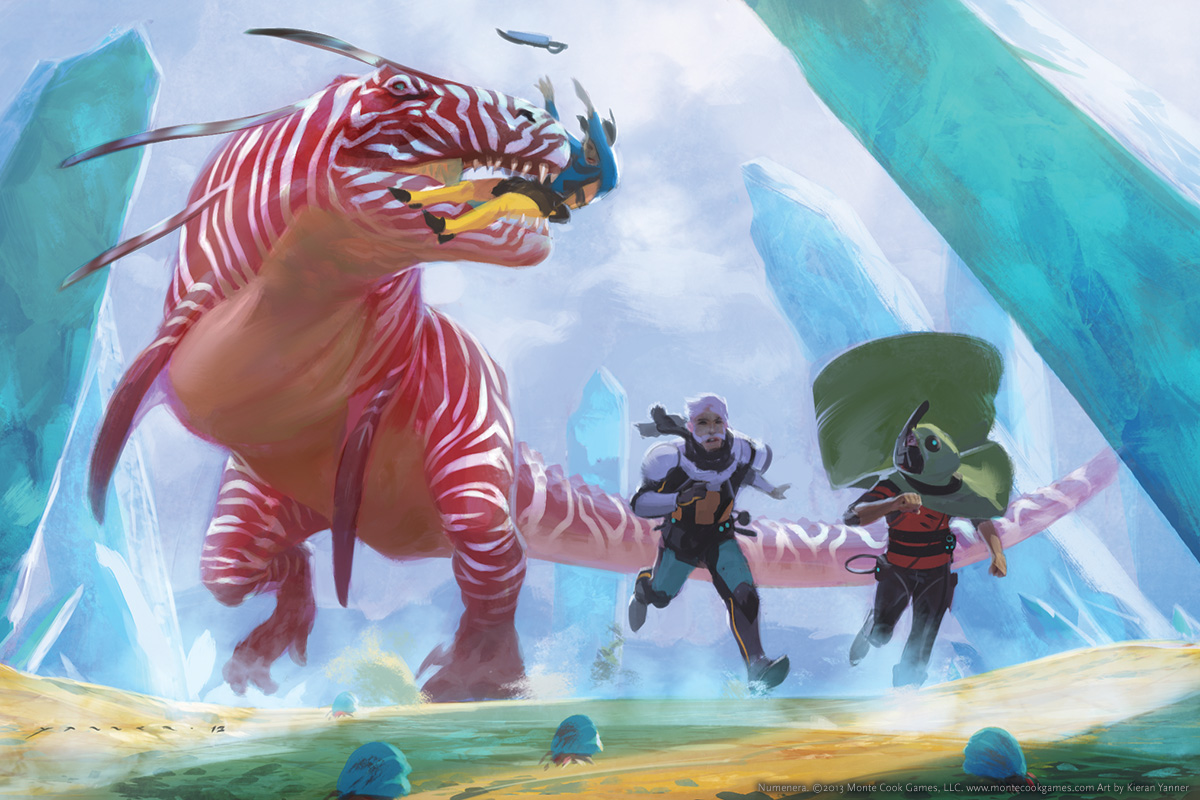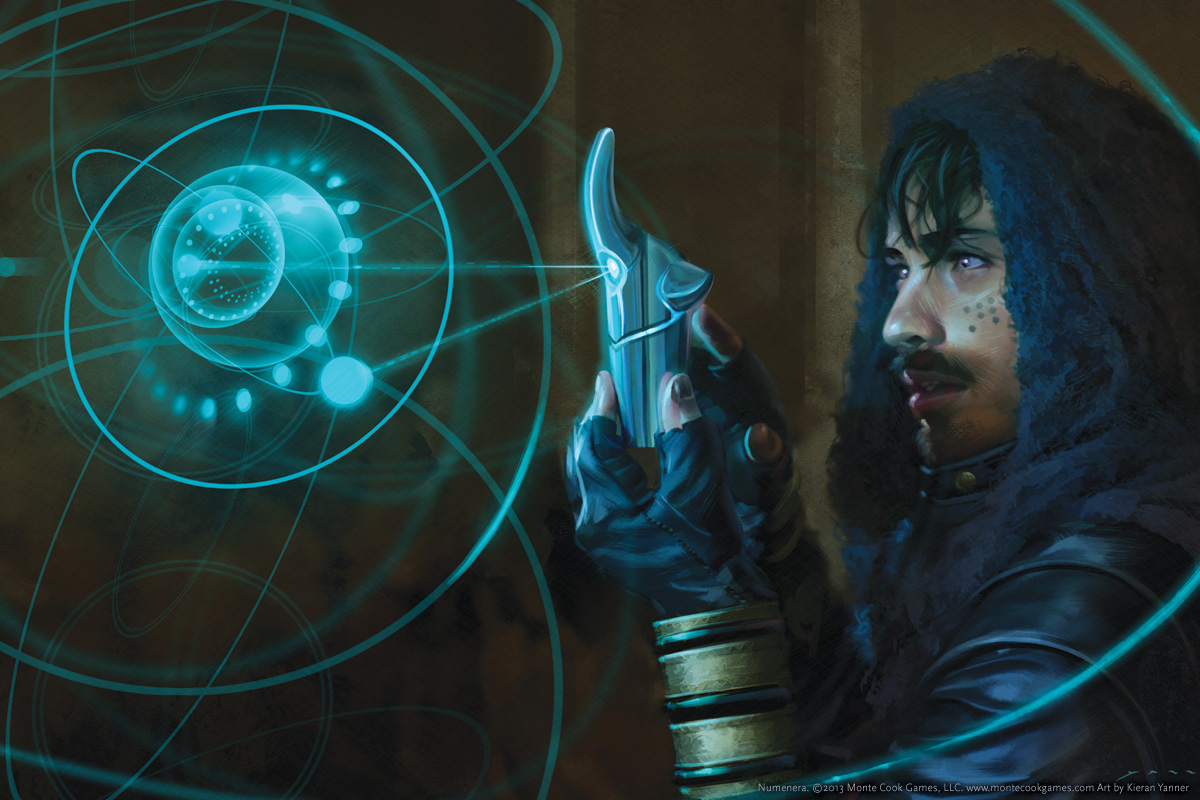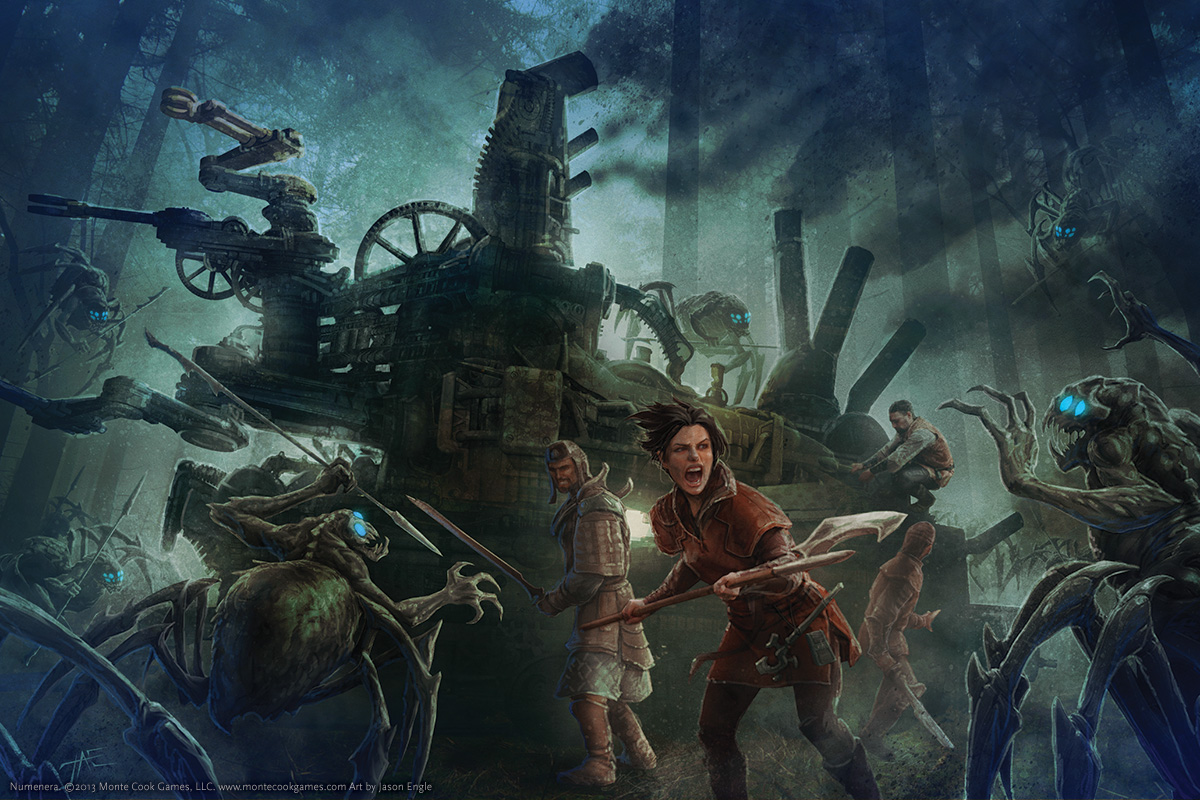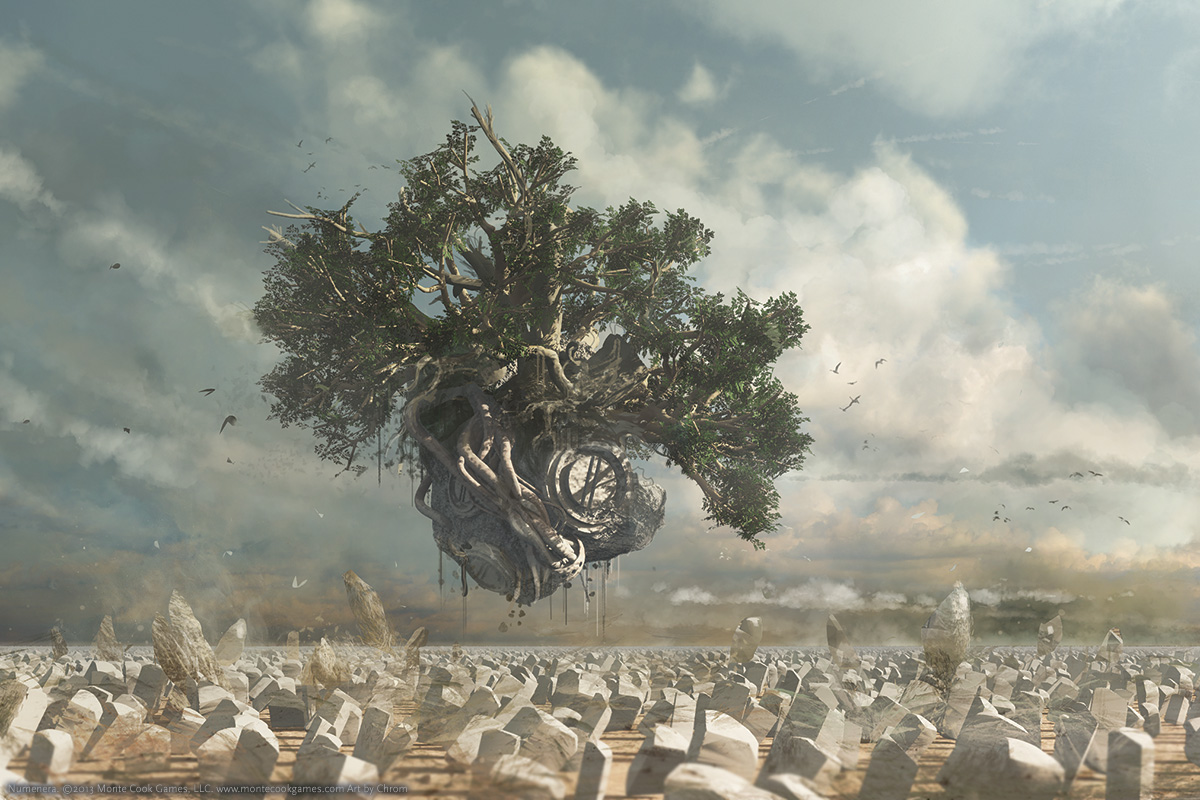In this series of articles, members of the team here at MCG look back at products we’ve released over the past decade and talk about their personal experiences in their creation, and the influence the titles have had on them as gamers, professionals, and just, well, people. It’s part of our celebration of Monte Cook Games’s first ten years. In this post COO and co-owner Charles Ryan talks about one of his favorites so far: Numenera.

Numenera changed my life. OK, so that trope-y statement is a little melodramatic, but, in a very literal sense, it’s true.
In 2013 I was out of the gaming industry, a world I’d written, edited, marketed, and business managed in for over 20 years.
It had been a great career. I’d started in indie publishing when that was barely a thing—a time when it was just becoming possible for an average person, on their own, to publish a book without actually being a big publishing company. I’d written and edited and developed and production managed RPGs at mid-tier companies, working on some awesome games and properties, and ultimately ended up as the Brand Manager for D&D at Wizards of the Coast. A dream job! The type of job you literally can’t imagine topping. Until, that is, I was offered the job of running the D&D brand, along with a number of other powerhouses, in the UK—another job you literally can’t imagine topping.
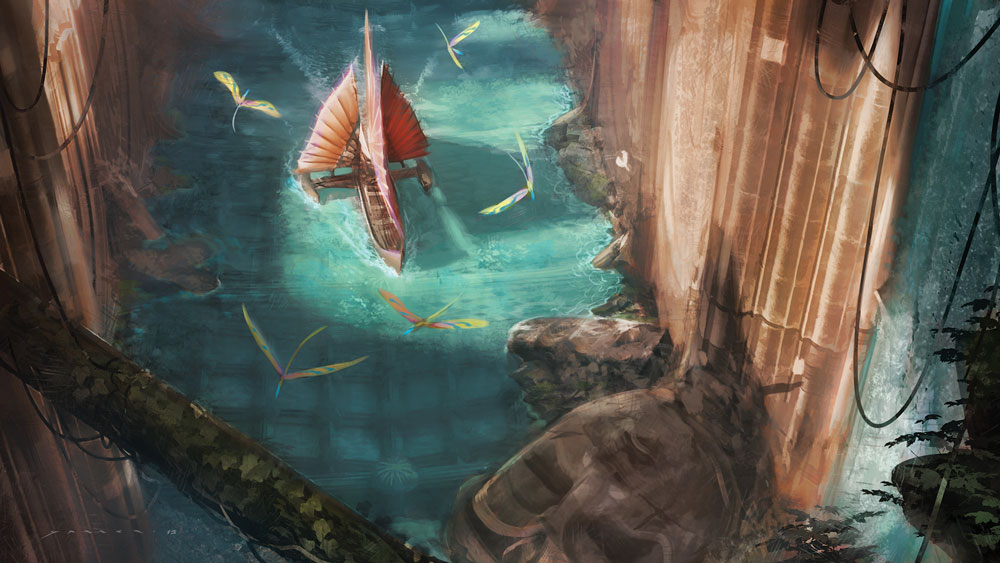
Those were some heady years, but nothing lasts forever. So in 2010, when Tammie (the love of my life and MCG’s General Manager) and I found ourselves back in the U.S. after four years living overseas, I didn’t really see a lot left for me in the game business. I’d already climbed the peak and stood at the top of the RPG world! I still loved RPGs, but outside of a bit of consulting work it seemed they were destined to revert to hobby status. The income would lie elsewhere—and, for some time, it did.
While I was working a somewhat conventional office job, Tammie began helping our long-time friend Monte with his new business. He and Shanna had held an insanely successful campaign on the Kickstarter platform the summer before, and they needed a hand with the sheer scope of making real their vision. In fact, they were thinking about turning this success not just into the short line of products funded by the campaign, but a full-fledged publishing company. A going concern.
Would I be interested in being involved?
I was unsure, at first. Tam and Monte and I are friends of many years—we’d worked side by side at WotC, gamed at the same table many a time, even vacationed in Cancun together. But small publishing is a tough way to make a living. Startup RPG companies—even those headlined by as mighty a name as Monte’s—come and go. I’d already done everything I wanted to in the game industry.
And then Monte sent me a PDF of Numenera.
The book wouldn’t go to press for another month or two; I was scrolling through an early layout file that was still getting the typos proofed out of it. But even so, it was clear I was looking at something really exciting.
It started with the artwork—those Kieran Yanner landscapes showcasing a wondrous world so utterly different than anything I’d encountered in (at that point) 30 years of gaming. With its hanging obelisks, vast and inscrutable ruins, weird creatures and weirder geography, it was a world I instantly and desperately wanted to explore, to know more about, to discover. Then I started reading the words, and they did not disappoint. I’d played (and sometimes written) RPGs from all corners of the multi-dimensional design-philosophy spectrum. Numenera was hitting a sweet spot that spoke directly to my personal style of GMing in a way that no previous game, no matter how much I loved it, had quite done.
A sampling of the wondrous, inspiring art from the original Numenera corebook.
Numenera had proven its commercial potential in that first, company-founding Kickstarter, blowing away all previous records for crowdfunding RPGs. But that was clearly just the beginning. Yes, this was something I was interested in being involved with!
From the career side, the rest, as they say, is history. I joined Monte and Shanna and Tammie, and MCG grew and flourished. Numenera remains the flagship of a fleet of games that have made nine years at MCG the most satisfying—and the longest—stint of my career. And it’s just getting started!
But that’s not actually the point; Numenera’s role in my career is just an illustration of its impact, not the impact itself. I pickup up my first RPG in 1979, and I haven’t put them down since. I dove into Numenera—not just the job, but the game. In recent years it’s been eclipsed a bit at my game table by other MCG RPGs—Cypher System and Invisible Sun campaigns in particular—but I still return to it now and then. (And not just to play, but also to write—I recently penned Shards of the Looking Glass, our Numenera adventure for Gen Con and other 2022 conventions.)
Numenera never fails to inspire the same sense of awe, the same desire to explore, as it did that spring day as I scrolled through the pre-production PDF on my iPad. It’s a setting lushly and vividly realized, with a game system that introduced precepts so foundational that they’ve underpinned every game we’ve made here at MCG since.
For me at least, it will never lose its sense of wonder.
Charles
Numenera, by Monte Cook, was released in September 2013 as a 416-page hardcover or PDF. Following three printings, it was superseded by Numenera Discovery and Numenera Destiny in 2018. Check them out at the MCG Shop.
